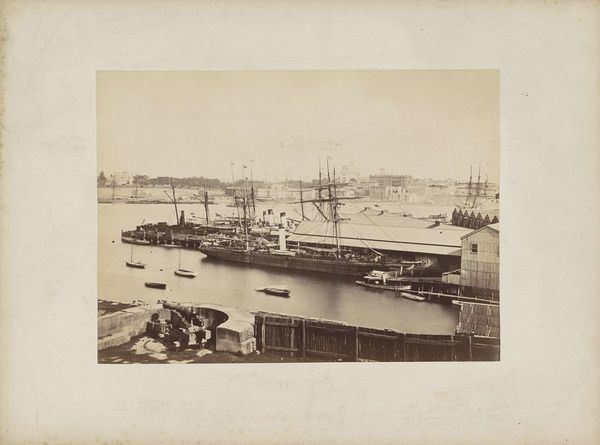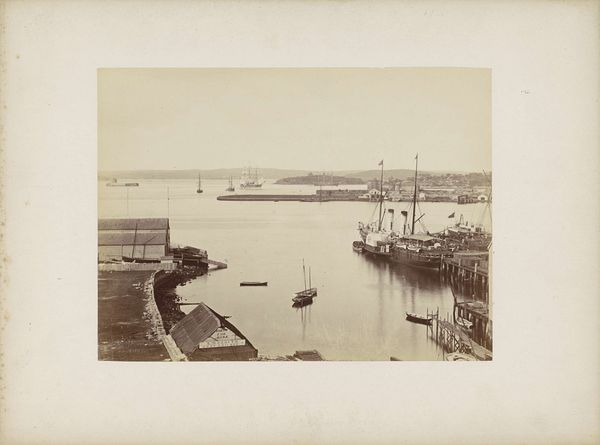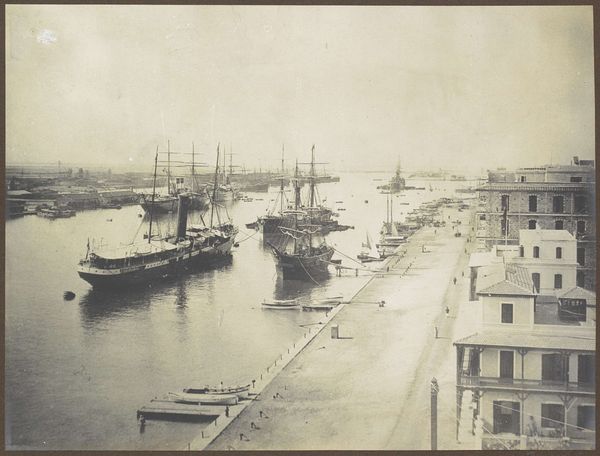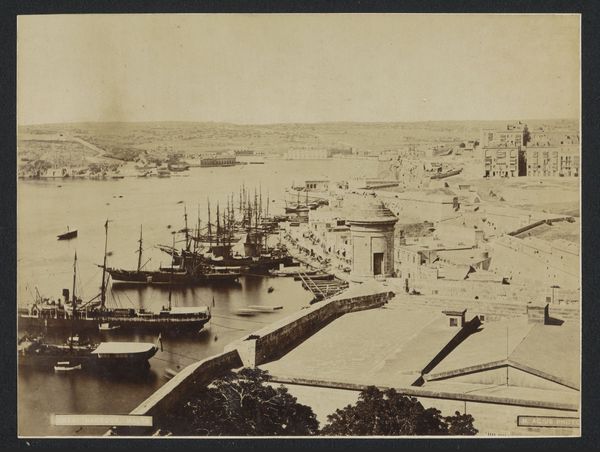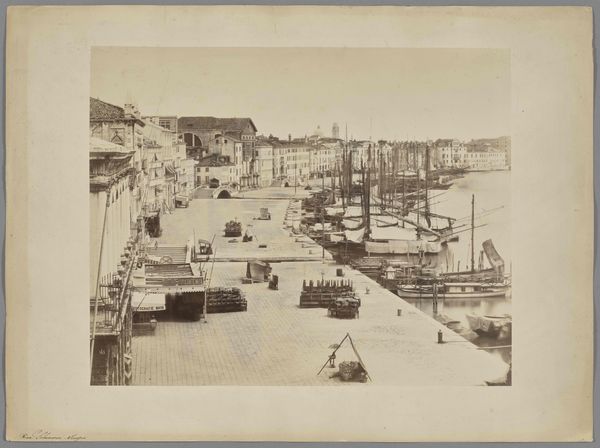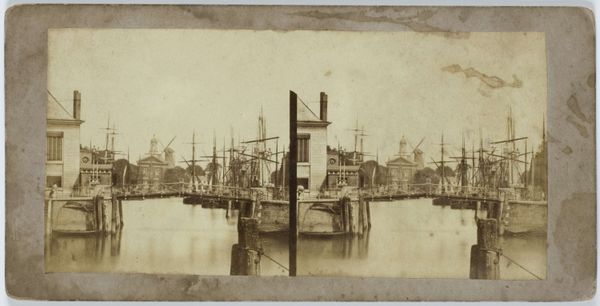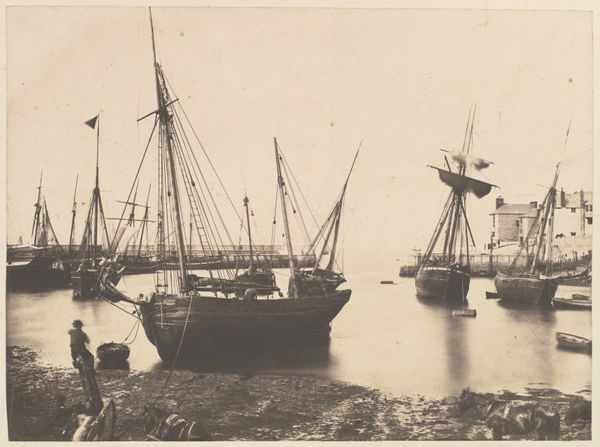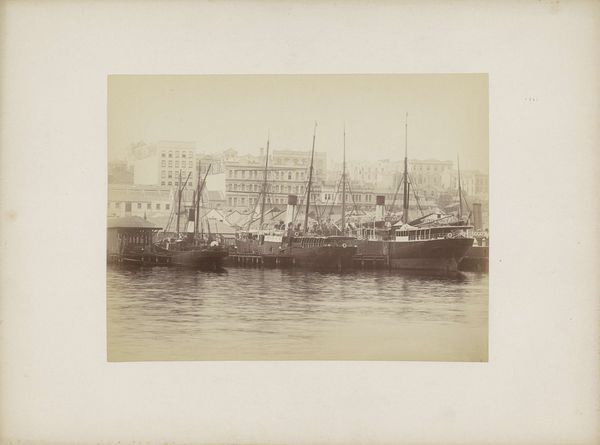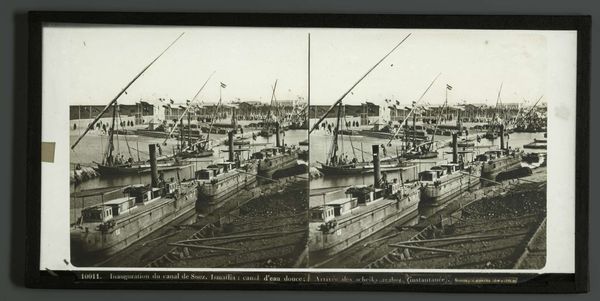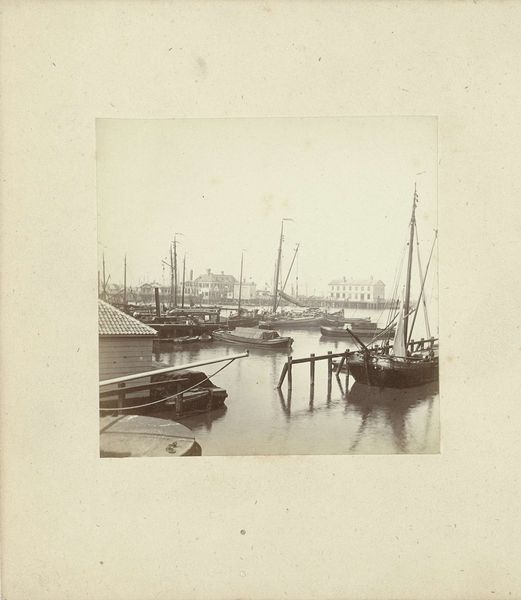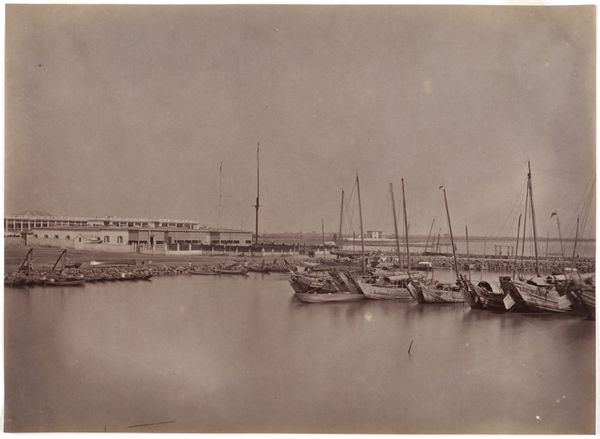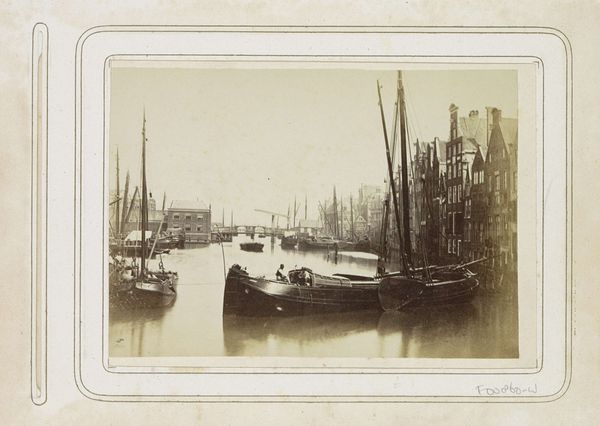
photography
#
landscape
#
photography
#
coloured pencil
#
cityscape
Dimensions: height 92 mm, width 150 mm
Copyright: Rijks Museum: Open Domain
Editor: Here we have "Gezicht op de Nicolaasbrug over de Neva in Sint-Petersburg," a photograph by Albert Felisch, dating roughly from 1880 to 1900. The sepia tones give it such a sense of history, and the composition, with the ships framing the cityscape in the background, is just wonderful. What strikes you about it? Curator: What I find most compelling is the geometric interplay. The masts create a dense vertical screen in the foreground, sharply contrasting with the horizontal sweep of the bridge and buildings across the Neva. Note how the photographer has layered forms—the organic shapes of the ships against the rigid architecture of the city. The dome in the distance provides a subtle focal point. Does this layering of forms have significance to you? Editor: I think it directs my eye to wander between the ships and the city skyline. It definitely adds depth, preventing it from being a simple documentation of St. Petersburg. Curator: Precisely. Felisch isn’t merely recording; he is constructing a visual relationship. Consider the tonal variations. The darkness of the ships anchors the composition, allowing the lighter hues of the background architecture to recede. Observe how the reflections on the water almost echo the structures above, creating a mirroring effect that doubles the architectural forms. Editor: It's almost like a study in contrasts - the man-made versus nature, dark versus light, solid versus liquid. Is the artist commenting on those relationships or just showcasing them? Curator: That’s a vital question. As a formalist, my inclination is to focus on the demonstrable: the visual language itself. The success of the photograph lies in the sophisticated manipulation of these visual elements, whether intended as commentary or not. By carefully orchestrating line, tone, and form, Felisch elevates the document into art. What would you say is your takeaway from our little chat? Editor: That you don't need symbolism or history to appreciate a photograph; the image itself has its own message if you learn to decode its language. Curator: Precisely. By focusing on form, we reveal the underlying structures that grant a work its aesthetic power.
Comments
No comments
Be the first to comment and join the conversation on the ultimate creative platform.
